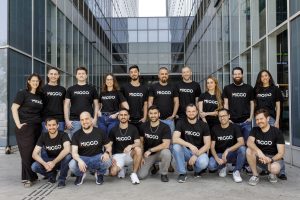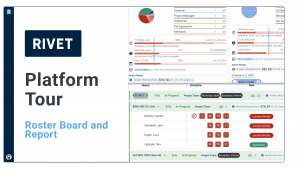Moving from 3-layer to scale-out : Single-layer architecture | #EMCWorld
![]() The history of innovation is wrought with stories of discoveries and creations that were never truly appreciated until well after their debut. ScaleIO is one of those innovations. It didn’t have much recognition when it first arrived on the scene. Now, ScaleIO is an industry category and also the hottest thing in database architecture.
The history of innovation is wrought with stories of discoveries and creations that were never truly appreciated until well after their debut. ScaleIO is one of those innovations. It didn’t have much recognition when it first arrived on the scene. Now, ScaleIO is an industry category and also the hottest thing in database architecture.
“It’s a great feeling to start something from scratch where people tell you it’s impossible and it’s never going to work and then, within a few years, it’s suddenly an industry category that analysts are following [and] customers are buying in to,” said Boaz Palgi, VP and GM of EMC’s Advanced Software Division and former CEO and Co-Founder of ScaleIO. He sat down with John Furrier and Dave Vellante to discuss the building of ScaleIO and where it fits into the market.
The traditional data center architecture of servers, fabric and storage was actually a work-around 20 years ago when the application servers didn’t have the resources to run the required application. Because of this, people took other servers, filled them with storage disks and ran dedicated software storage. This became the frontrunner of today’s SAN market. Today, servers have more than enough resources. It’s now possible to run multiple applications and still have enough resources to run the software layer. Therefore, it no longer makes any sense to spend all the operations and CapEx on additional layers. This was ScaleIO’s original premise.
How ScaleIO Fits In…
- with ViPR
ViPR Controller is a management and provisioning tool that makes it possible to manage heterogeneous storage environments in the data center, including both the platform two traditional arrays and software only storage systems, like ScaleIO and ViPR Object. It enables customers to start by facilitating the operations and management of their heterogeneous data center today, and then continues to use that same management platform to bridge into the third platform type of software-defined storage.
ScaleIO is a scale-out, software-only block storage solution which runs alongside applications, databases or HyperBases on the actual application servers. Palgi added that ScaleIO is a distributed parallel architecture. It strips the data over a large number of devices and nodes then aggregate both the capacity and performance of the various nodes. ScaleIO then presents back as a virtual SAN to the applications in the environment.
- with the Storage Market
ScaleIO is the most scalable solution in the market today. It can scale from three up to thousands of servers in a fully elastic manner. ScaleIO doesn’t force customers into any type of hardware or configuration lock-in and runs on any server hardware and server configuration. It also doesn’t force customers into any symmetric node, allowing them to have different types of servers in their data centers and still aggregate all of that with ScaleIO into a single storage pool.
With the converged infrastructure market, Palgi said, “ScaleIO built to be a very small footprint solution so that it can run on the actual application servers alongside the applications, the databases or the hypervisors.” He added, by enabling the aggregation of local capacity inside the servers, they allow customers to create hyper convergence or partners to create hyper converged appliances.
A Big Shift in Data Centers
Palgi concluded the interview stating that we are currently experiencing a big shift in the approach to data centers. One driver of this is the understanding in enterprise environments that much larger data centers need much more SLAs and much more performance. This can now be accomplished on completely commodity hardware, making IT executives think twice about how they build their data centers. Another driver is the belief that convergence translates into easy operations and better manageability, combined with the pressures of doing more with less.
“This combination of drivers in the market is pushing this whole move from the traditional three-layer architecture to a new architecture that is scale-out, commodity-based, high performance and single-layer,” said Palgi.
A message from John Furrier, co-founder of SiliconANGLE:
Your vote of support is important to us and it helps us keep the content FREE.
One click below supports our mission to provide free, deep, and relevant content.
Join our community on YouTube
Join the community that includes more than 15,000 #CubeAlumni experts, including Amazon.com CEO Andy Jassy, Dell Technologies founder and CEO Michael Dell, Intel CEO Pat Gelsinger, and many more luminaries and experts.
THANK YOU













